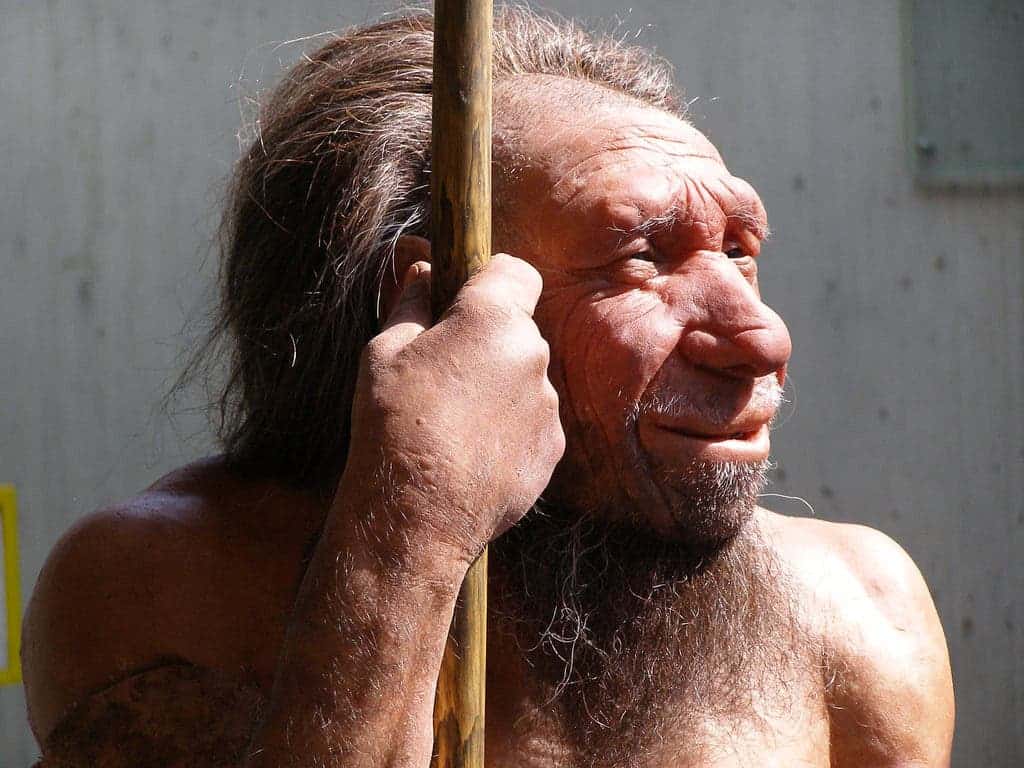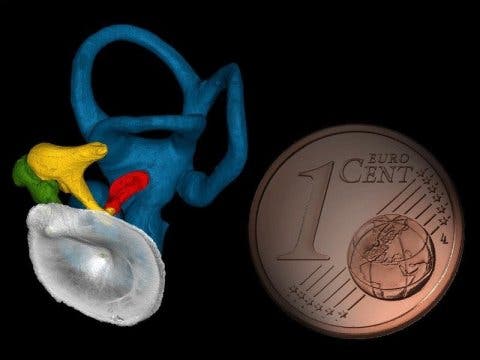
Since the first Neanderthal fossils were found in Belgium at the dawn of the 19th century, scientists have debated whether these extinct cousins were capable of speech similarly to humans. Almost two hundred years later, this discussion is far from settled. Since there’s no way of telling for sure, we can only infer that they could or couldn’t do based on indirect evidence such as the artifacts and cave drawings that they left behind.
These archeological findings suggest Neanderthals formed hunter-gatherer communities and it is likely that they used speech to communicate among themselves, and probably with humans. But there are also anatomical features that we can study. Researchers at the Max Planck Institute for Evolutionary Anthropology, for instance, recently used cutting edge imaging techniques to analyze the ear bones of Neanderthals. Their findings suggest consistent aspects of vocal communication in modern humans and Neanderthals.
Could a Neandethal dance to the beat?
The middle ear is the part of the ear that rests between the eardrum and the oval window, transmitting sound pressure waves from the outer to the inner ear. The middle ear is made of three bones called hammer, anvil and stapes. This ossicular chain is found in all mammals, and for good reason too because these amplify the energy of the sound waves and allow them to travel within the fluid-filled inner ear — otherwise, mammals wouldn’t be able to hear.
[ALSO SEE] How we hear
As important as these three bones are for hearing, they can be just as frustrating for archaeologists. Because they’re the smallest bones in the body, ossicles are often lost and rarely show up in fossil records, including those of human ancestors.
“We were really astonished how often the ear ossicles are actually present in these fossil remains, particularly when the ear became filled with sediments” says lead researcher Alexander Stoessel in a statement.
Using high-res computer tomography (CT) scans, the researchers were able to reconstruct what the ear bones look like in 3-D, all without making so much as a dent in the actual fossils. The resulting models were then compared to the ossicles of anatomically modern humans and also chimpanzees and gorillas which are our closest living relatives.
“Despite the close relationship between anatomically modern humans and neanderthals to our surprise the ear ossicles are very differently shaped between the two human species” says Romain David who was involved in the study.

In order to see whether these morphological differences in ear bones affects in any way the hearing capacity of Neanderthals, the team also analyzed the surrounding structures of the ear ossicles. Surprisingly, the answer is ‘no’. Despite morphological differences, the functional parameters of Neanderthal and modern human middle ear are largely the same, the authors reported in the journal Proceedings of the National Academy of Sciences.
These apparent differences can be attributed to different evolutionary trajectories that the two species, Neanderthal and human, took in order to increase brain volume. This evolutionary path impacted the structure of the cranial base, which also includes the middle ear. Unfortunately, a larynx, or voice box, which is formed from soft tissue, has not been found in the Neanderthal fossil record. But we do know, at least, that Neanderthals were capable of hearing the same frequency spectrum as humans.
“For us these results could be indicative for consistent aspects of vocal communication in anatomically modern humans and neanderthals that were already present in their common ancestor” says Jean-Jacques Hublin who is an author of this study and continues “these findings should be a basis for continuing research on the nature of the spoken language in archaic hominins.”






